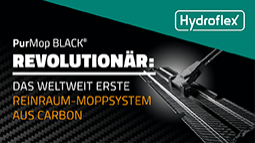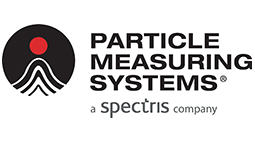Getting DATA You Need With Particle Measurements
By Patricia B. Keady, SI Incorporated Shoreview, MinnesotaReprinted from indoor Environment Connections November 2000, volume 2, Issue 1Particles, large and small, acres important on factor in maintaining good indoor air quality. Control of measures, look for as improved housekeeping, upgraded filter, or per by exhaust Design, acres usually straightforward act ion. However, choosing the correct DATA the per by control depends on having for decision making. Many of instrument, employing various technologies, acres currently available tons provide this material time information. The question is � Which technology is right for my application? � photometer, optical particle counters (OPCs) and condensation particle counters (CPCs) all measure airborne particles in material time. Each technology has A unique sensitivity ton specific particle characteristics look for as size, measured and refractive index. Table 1 summarizes the basic performance of differences. Note into particular the size rank for each and the of upper limits OF the NUMBERs concentrations OPCs and CPCs between. To Table 2 of summarizes typical applications for each measurement technology.PhotometersOften used for industrial workplace studies and emission monitoring, photometer of acres wave suited for ASS-sing humanly exposure tons specific size fraction aerosol in material time. They use conventional lightscattering technology ton closely estimate particulate measured concentrations. The operation OF A typical photometers is shown in Figure 1st A SAM-polarizes is drawn into the instrument by A continuously running pumps. The size fraction OF interest is aerodynamically � CUT � from the air stream RK the SAM-polarizes inlet using more either on impactor or A cyclone. The size fractions OF most interest acres respirable, thoracic, PM10, PM2.5 and PM1.0. The size classified SAM-polarizes passport through A focusing nozzle and enters the photodetector sensing more chamber. A laser diode emits light through A set OF focusing optics. As light contacts the SAM-polarizes particles, it is scattered in all directions. A photodetector converts this light into A VOL-meets, which is calibrated against A known aerosol measured concentration (mg/m3). Into some of instrument, A portion of OF the SAM-polarizes is drawn from the Main air stream, filtered and RH-introduced as sheath air. The sheath air surrounds the particle SAM-polarizes tons of protect the instrument � s optics from fouling. Photometer typically measure particle size of rank from 0,1 tons of 10 �m dia. meters with concentrations ranging from 0,01 tons of 100 mg/m3 or more. Photometer CAN emergency � lake � particles below 0,1 �m (ultrafine particles) because the particles of acres too small ton scatter detectable quantities OF light. Photometer measure the aggregates signal from A � cloud � OF of particles and of acres emergency designed tons detect individually particles, even when they acres relatively large. Most of photometer of acres calibrated against A standard test dust, commonly referred tons as Arizona Road Dust. This calibration is A good approximation for most ambient aerosol. Because optical measurements acres dependent upon particle size and material properties, there May fuel element of times in which A custom calibration would improve the accuracy for A specific aerosol. Optical Particle CountersOptical particle counters measure particle size and NUMBER concentration by detecting the light scattered from individually particles. They were traditionally used for clean room monitorings, but have more recently found application in filters testing, outdoor environmental monitoring, and indoor air quality of studies. Single of particles of acres drawn through A focused lasers beam and produce A flash OF light, as illustrated in Figure 2. The intensity OF the scattered light is A complex function OF the dia. meters, shape and refractive index OF the particle as wave as light wavelength and geometry OF the optical detector. A photodetector measures the amount OF light that each particle scatters and record A COUNT for each calibrated size rank or is. The measured size rank is typically 0,3 tons of 20 �m dia. meters, and the NUMBERs concentration is limited tons of A maximum OF 2.000.000 particles/ft3 (70 particles/cm3). OPCs of acres calibrated with perfectly uniformly, spherical polystyrene latex bead particles OF known refractive index. The measured size OF unknown particle is therefore the � light scattering equivalent on size � as compared ton the known calibration particle. The actual physical size May fuel element quite different from this. Condensation Particle CountersCondensation particle counters, sometimes referred tons as condensation nuclei counters, acres specialized instrument that roofridge enlarge very small particles ton on optically detectable size. They excel RK COUNTING of particles into size rank that acres invisible tons of OPCs and of photometer. CPCs of acres used for A variety OF applications ranging from respirator fit testing tons environmental air pollution studies ton of basic research. They of acres particularly wave suited for tracking indoors pollutants tons their SOURCE. To As depicted in Figure 3, particles of acres continuously drawn into the instrument and passed through A Alco-get vapor warmly. The mixture then flows through A of condenser section where the Alco-get to vapor condenses onto the particles and � grows � them into more larger droplets. The individually droplets then passport through the focal POINT OF A laser beam, producing A flash OF light. Each light flash is counted as one particle. The measured size rank is typically from below 0,02 tons above 1,0 �m dia. meters. NUMBER concentration rank from zero ton more than 500.000 particles/cm3 (15.000.000.000 particles/ft3). The concentration measurement does emergency depend on the size or material of properties OF the particle. All three of type OF of instrument � photometer, optical particle counters, and condensation particle counters � have their place in IAQ investigations. Matching the appropriate technology with your particular application wants provide the DATA you need tons and-purchased for and improve your building � s air quality. Photometer, which measure measured concentration, provide the necessary DATA ton compare against air quality standard and of guidelines. OPCs give additional understanding OF particle NUMBERs concentrations and size of rank OF the mid sized particles ton help identify the probable SOURCE and health impact. Finally, CPCs more offer insight into the ultrafine particles that acres now emerging as important on new IAQ metric that May play A significant role into the health and comfort OF building occupants.TSI Incorporated is A worldwide of supplier OF innovative of instrument for the safety, comfort, and health OF people. TSI � s of representatives and distributors throughout the world focus on helping customers solve unique measurement problem related tons of indoors air quality, ventilation, respirator fit testing, gas detection, and particle sampling.
This text was translated automatically.









